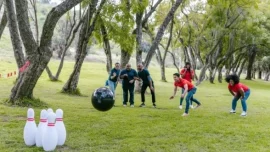“Age is just a number.”
How frequently have you heard people say this, and how often do you use this phrase? A lot, right?
It might stand true in most cases, but again, there is a valid reason you celebrate birth anniversaries to mark another passing year; after all, chronological age matters.
Moreover, it acts as an identifier, a distinction that puts you into a specific generation.
Undeniably diversity is a strength, and this becomes more valuable when the current workforce has potentially five generations simultaneously. Though the age-diverse workforce might have grandparents and grandchildren in the same workspace, pursuing this age diversity offers a formidable challenge to the recruiters.
Multigenerational Workforce: The Meaning
A multigenerational workforce is one with employees from many generations. In addition, because the average human lifespan is growing, more people opt to work past the traditional retirement age.
Firms now have 4-5 generations working together. These are the individuals who make up these groups:
- Silent Generation (Traditionalists) – born 1928-1945
- Baby Boomers – born 1946-1964
- Generation X – born 1965-1980
- Generation Y (Millennials) – born 1981-1996
- Generation Z – born 1997-2012
As a recruiter who works with a diverse age group, the following are the most significant differences:
Mindset
Each generation brings its belief system and values to the workplace. For example, baby boomers value material things and uniqueness, whereas Gen X values work-life balance. On the other hand, millennials are obsessed with quick gratification/feedback, communication, and learning.
Effort Ethics
The baby boomer’s work ethic revolved around discipline, commitment, and hard work. However, maintaining a work-life balance was the core of Gen X’s work ethic. On the other hand, millennials enjoy multitasking and professional development through life-enriching activities.
Adaptability
While baby boomers are notorious for being averse to change and preferring their familiar surroundings, Gen Xers are considerably more receptive to change. In contrast, millennials are the most adaptable to change and take on these issues front on.
Hiring Multigeneration Workforce
1. The Benefits
- Different generations have a unique perspective towards work, helping your organization with varied skills and abilities.
- With different perspectives come different solutions, increasing the problem-solving ability in the workplace.
- Increased diversity in teams means more chances for productive interactions and learning from each other.
- Each generation has a different awareness and strengths, which adds value to the workforce.
- Employees from different generations in the workforce mirror a family structure, and such an age-diverse workforce is emotionally more available for each other.
2. The Challenges
- Different generations have different understandings of tonality and message conveyed. So, finding the right means of communication becomes a challenge.
- With diversity comes pre-conceived notions and negative stereotypes, making the work culture toxic.
- Different generations have different expectations, be it in direct compensation and pay packages or facilities offered by the organization. Fulfilling each individual’s needs can be challenging for HR managers.
3. The Solution: Right Management Practices
- Redefine your employee value proposition and offer cultural benefits to satisfy all generations. Employees across generations appreciate policies like meal cards, wellness programs, paid leaves.
- Make your hiring process inclusive and free from all sorts of age biases, helping employees feel welcome. From the language of job ads you post to the final onboarding, ensure all individuals are treated with respect.
- Use different communication styles with different generations while ensuring that the same information is being passed on to each employee in the most suitable manner.
- Accommodate a range of working styles and needs because each generation understands work requirements differently and operate in unique ways.
- Create learning and development opportunities for all employees keeping in mind their needs and requirements.
- Create an open culture of giving and receiving feedback.
Organizations benefit from having a multigenerational workforce because it keeps ideas flowing and allows for new ways of working. This age range allows for a symbiotic evolution of knowledge and skills among coworkers. The organization grows in proportion to the increase in staff numbers. As a result, it is up to the recruiters to balance experience and talents and pick people who match its basic values. So, if you wish to hire the best from each generation and make your workforce strong and equipped with a range of competencies, you should consider employing Discover Assessments‘ pre-employment assessment solutions. Contact us to use our gamut of psychometric solutions, you can attract, hire, and retain the best talents, taking your organization to newer heights.






